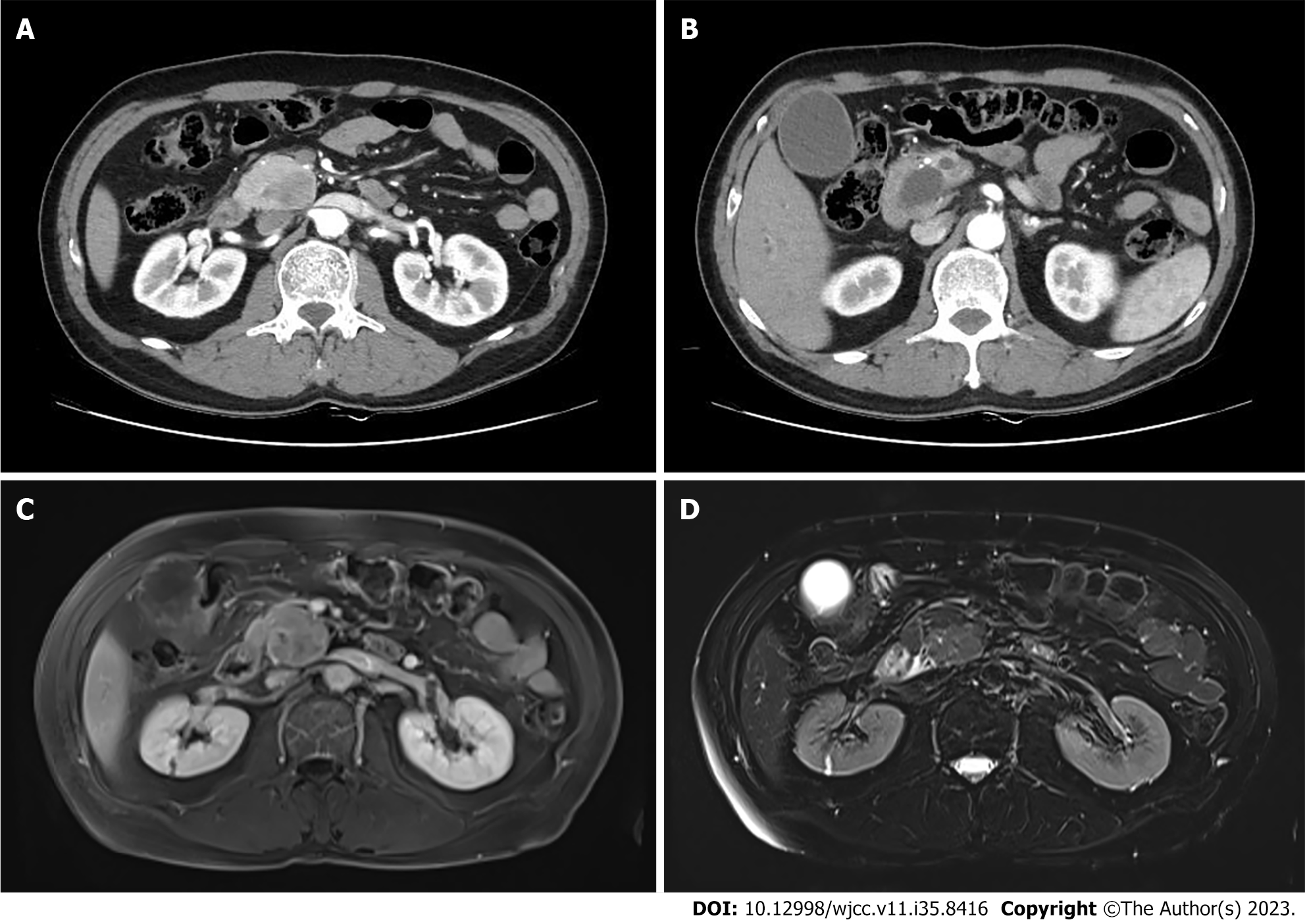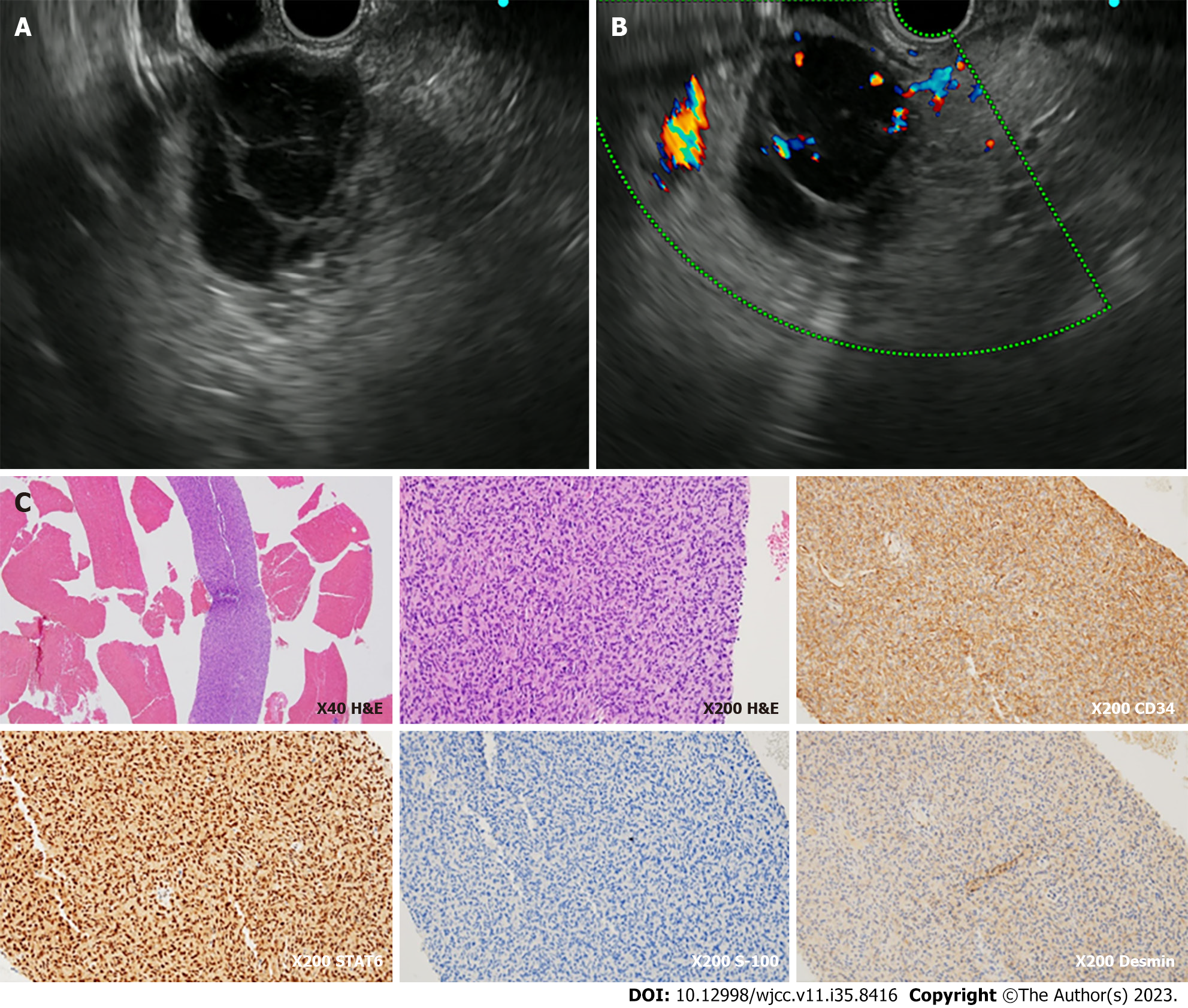Copyright
©The Author(s) 2023.
World J Clin Cases. Dec 16, 2023; 11(35): 8416-8424
Published online Dec 16, 2023. doi: 10.12998/wjcc.v11.i35.8416
Published online Dec 16, 2023. doi: 10.12998/wjcc.v11.i35.8416
Figure 1 Time axis of the patient’s detection, treatment, and post-operative follow-up of brain tumor.
A: Brain computed tomography (CT) revealed an 8 cm × 4.7 cm multilobulated heterogeneous mass at both parieto-occipital lobe; B: Brain CT after osteoplastic craniotomy for removal; C: 16 mo later, brain magnetic resonance imaging (MRI) showed 1.7 cm enhancing lesion at the left cerebellar area which suggested remnant mass; D: 2 years later, brain MRI showed new 0.6 cm sized enhancing mass, suggesting recurrence; E: 5 years later, brain MRI showed multiple masses in both cerebellar area.
Figure 2 Radiologic findings.
A: Abdominal computed tomography (CT) showed a 3.5 cm sized mass lesion on the pancreas head; B: The CT scan shows a double duct sign, the dilatation of both the pancreatic duct and bile duct, due to the compression of the mass lesion; C: On magnetic resonance imaging (MRI), T1-weighted imaging showed low signal intensity compared to the surrounding pancreas parenchyma; D: On MRI, T2-weighted imaging showed iso-signal intensity.
Figure 3 Endoscopic ultrasonography findings.
A: The mass showed hypoechogenicity inside, leading to an impression of cystic change; B: On doppler mode, blood vessels were observed inside the mass, suggesting it is less likely to be a cystic lesion; C: Endoscopic ultrasonography (EUS)-FNA specimen. H&E staining of the EUS-FNA specimen showed proliferation of spindle to ovoid cells. The specimen stained positive for smooth muscle actin, STAT6, and CD34, but negative for DOG-1, C-kit, S-100, and desmin.
Figure 4 Gross and pathological findings of resected specimens.
A: The cut surface of the resected pancreatic specimen showed a 3.9 cm × 3.6 cm well-circumscribed, gray to white-colored mass; B: Resected pancreas specimen. H&E staining of the resected pancreas specimen showed dense spindle to ovoid cells with positivity to CD34, epithelial membrane antigen (EMA), and STAT6 and negativity to desmin, smooth muscle actin, DOG-1, c-kit, and S-100; C: Resected brain specimen. H&E staining of the resected brain specimen showed dense spindle to ovoid cells with positivity to CD34, vimentin, and STAT6 and negativity to S-100, glial fibrillary acidic protein, and EMA. GFAP: Glial fibrillary acidic protein.
- Citation: Yi K, Lee J, Kim DU. Metastatic pancreatic solitary fibrous tumor: A case report. World J Clin Cases 2023; 11(35): 8416-8424
- URL: https://www.wjgnet.com/2307-8960/full/v11/i35/8416.htm
- DOI: https://dx.doi.org/10.12998/wjcc.v11.i35.8416












